In an organic garden, bug infestations and plant loss are – unfortunately – inevitable. But, with these 12 ways to fight garden pests naturally, you have a fighting chance at repelling the pests, reaping a big harvest, and still participating in a strong, organic ecosystem.
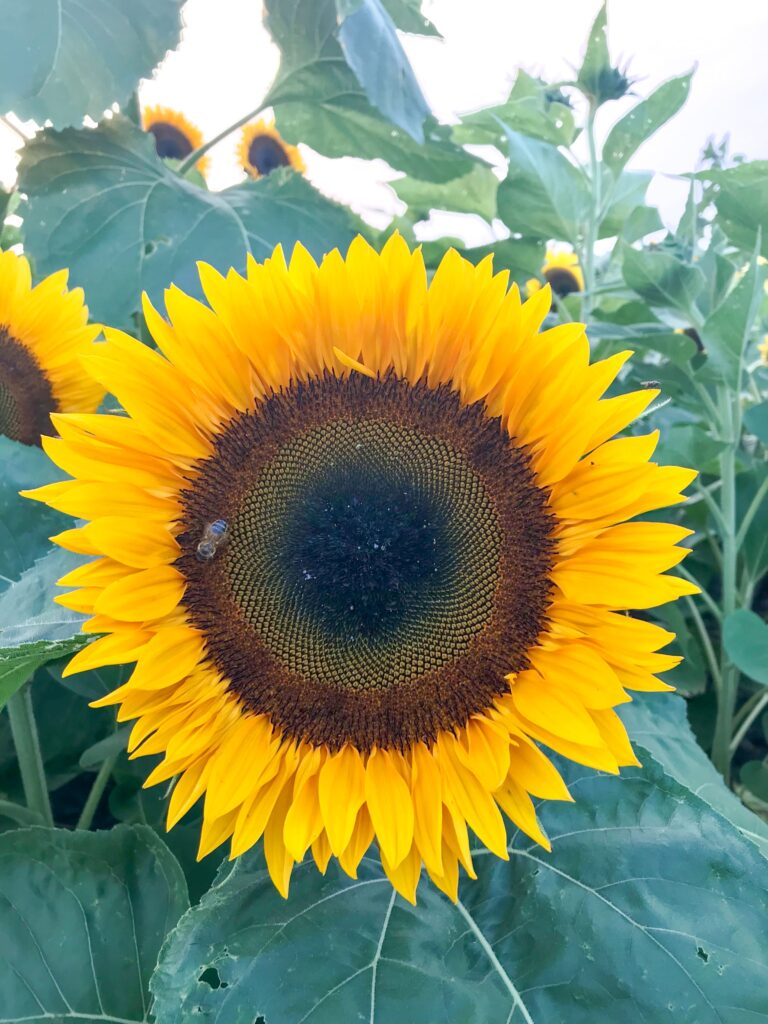
Here’s a truth Big Ag and conventional gardening corps don’t want you to know: If insects aren’t present in your garden, you aren’t a part of the ecosystem.
Yes, it’s frustrating to pick a ripe tomato only to discover its backside has been gnawed away. And yes, it’s gross to have to pick cabbage worms off the undersides of your brassicas. But the alternative is a garden that’s also absent bees, butterflies and other pollinators.
A garden lacking these friends is not only devoid of so much life and charm, it’s also going to have a hard time producing food for you.
So, if you dream of a lush, diverse garden buzzing with bees and other friends, you also have to take the bad with the good.

Namely, creepy crawlies that like to munch on your crops and, potentially, kill them. Today, we’re specifically talking about bugs that like to kill your plants and gnaw on your food. While some of these strategies are definitely also beneficial for bigger beasties like squirrels and rabbits, that’s a topic for a different day.
Many of these methods work on good bugs as well as bad, so you want to be judicious in your application. Only apply when the situation really calls for it. It’s better for your garden ecosystem if you can learn to live with a few holes and get comfortable hand-picking those creepy crawlies.
If you’re looking for tips on how to fight garden pests naturally, read on for my 12 best tips!
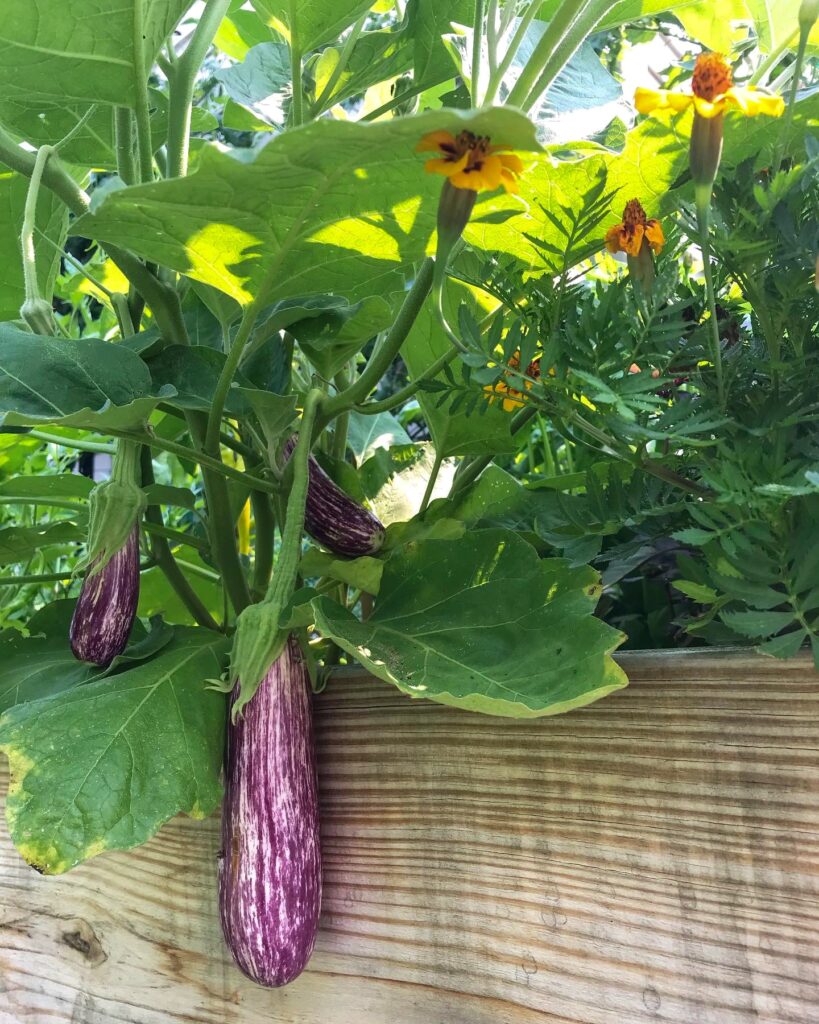
1. Practice Polyculture Gardening
If you have a home garden, you likely already have a polyculture garden, but it can’t hurt to be more deliberate about it.
Polyculture gardening is the opposite of big agriculture’s monoculture approach. For example, here in the Midwest we have endless fields of corn and soybeans, and not much else. One farm planting only corn is an example of a monoculture.
By contrast, a diverse farm/garden with many types of plants growing near each other is a polyculture (poly=many). If corn earworm infests a monoculture corn field, the whole crop can be decimated. In a polyculture garden, where plants are dispersed and intermixed with trap crops and companion plants, it’s less likely for a single insect infestation to damage the whole crop.
As you’re laying out your garden, mix different kinds of plants together. Don’t plant all your tomatoes or peppers in one row, but sprinkle them throughout your growing space. Mixing different types of plants together to confuse insects so they can’t find and destroy their preferred host is a simple way to fight garden pests naturally.
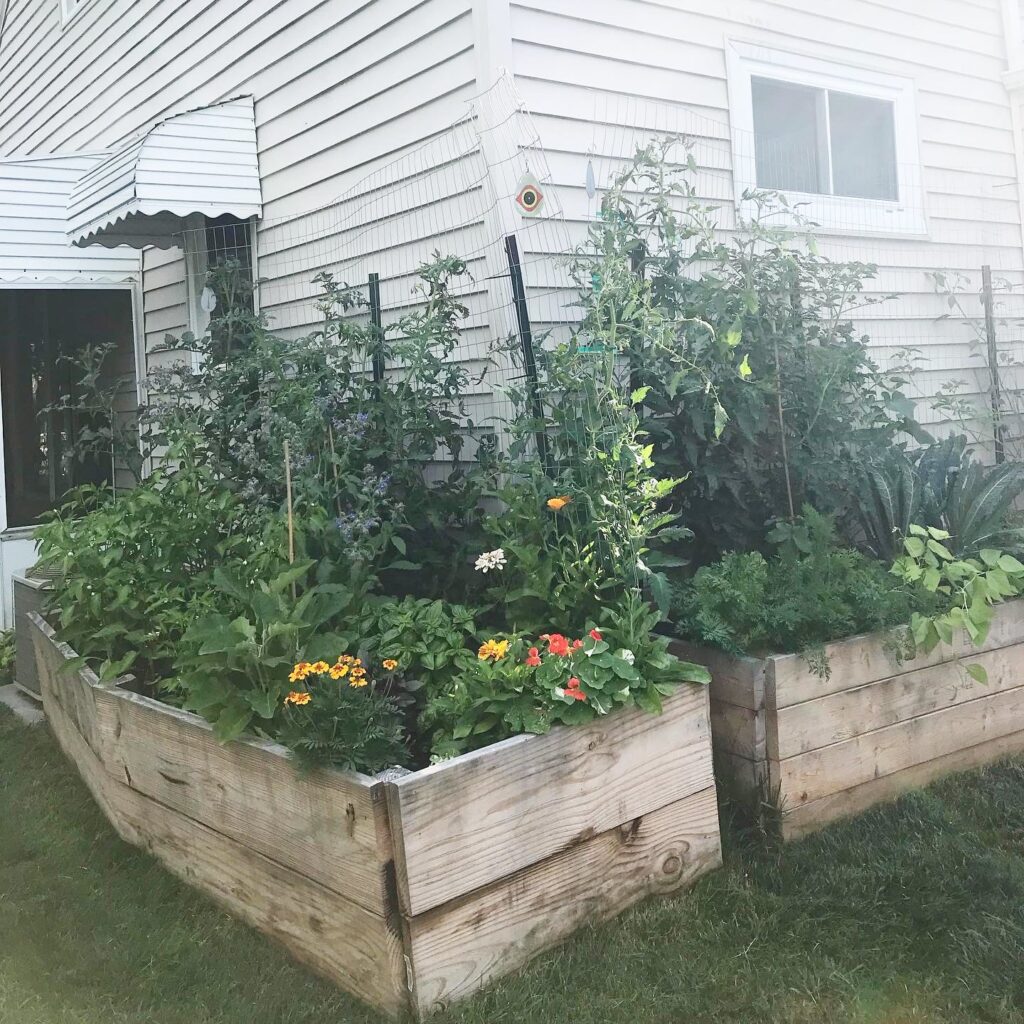
2. Similarly, Embrace Companion Planting
As you spread crops out around the garden, mix in herbs and flowers that serve as good growing companions.
I don’t subscribe to some of the rigid advice that you’ll see floating around the internet (*cough* Pinterest). For example, some companion planting advice suggests planting corn near lettuce. This makes sense spatially as corn grows tall and will throw shade on cool weather-loving lettuce. But it ignores that by the time corn has grown tall enough to provide this benefit, I’ll have already had to pull my lettuce because it’s grown too hot and the lettuce is bitter/bolted.
Rather than attempting to adhere to somewhat arbitrary advice that may not work for your climate, just try to get a good mix of veggies, herbs, and flowers (companion planting is often also polyculture planting). The bad bugs attracted to one crop may be repelled by the scent of another. Similarly, some plants will “trap” bad bugs so they eat it rather than the one you’re growing for food. For example, this spring all the aphids migrated to my borage, leaving my veggies alone.
Great companion plants include flowers like borage, nasturtium, and calendula, as well as strong-smelling herbs like basil.
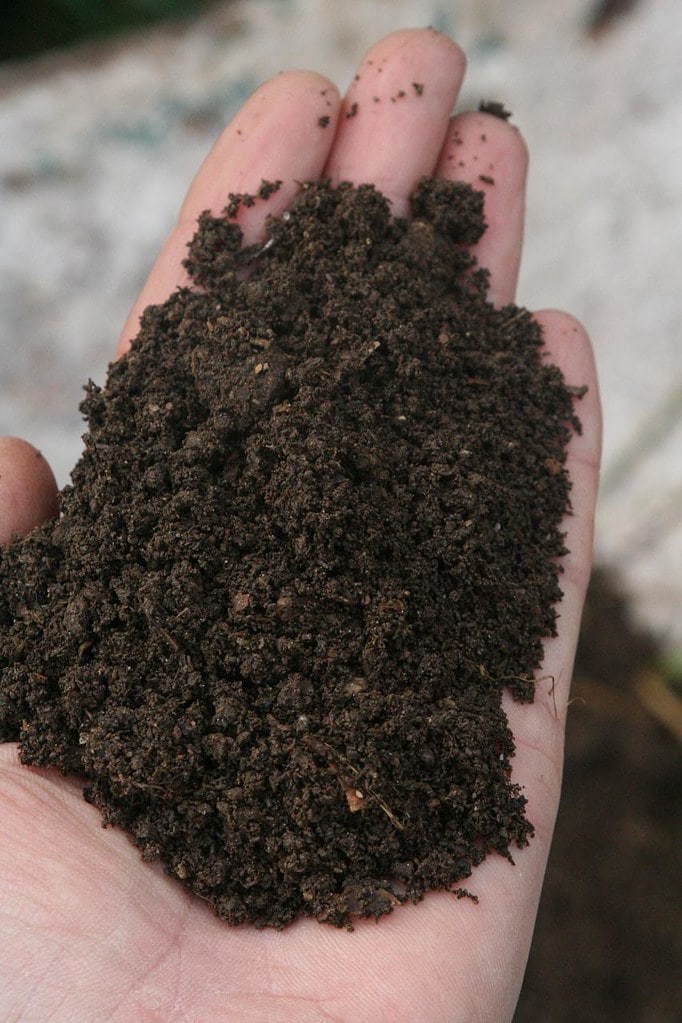
3. Cultivate Healthy Soil
Strong, healthy soil is 100% the best, most important thing you can do for your garden. Healthy soil yields healthy plants. Healthy plants can better weather insect damage and illnesses.
Amend soil regularly with compost to replenish the nutrients plants draw out. I’d also suggest getting your soil tested (it should be cheap/free through your local extension office!). Then you can amend to counteract specific deficiencies.
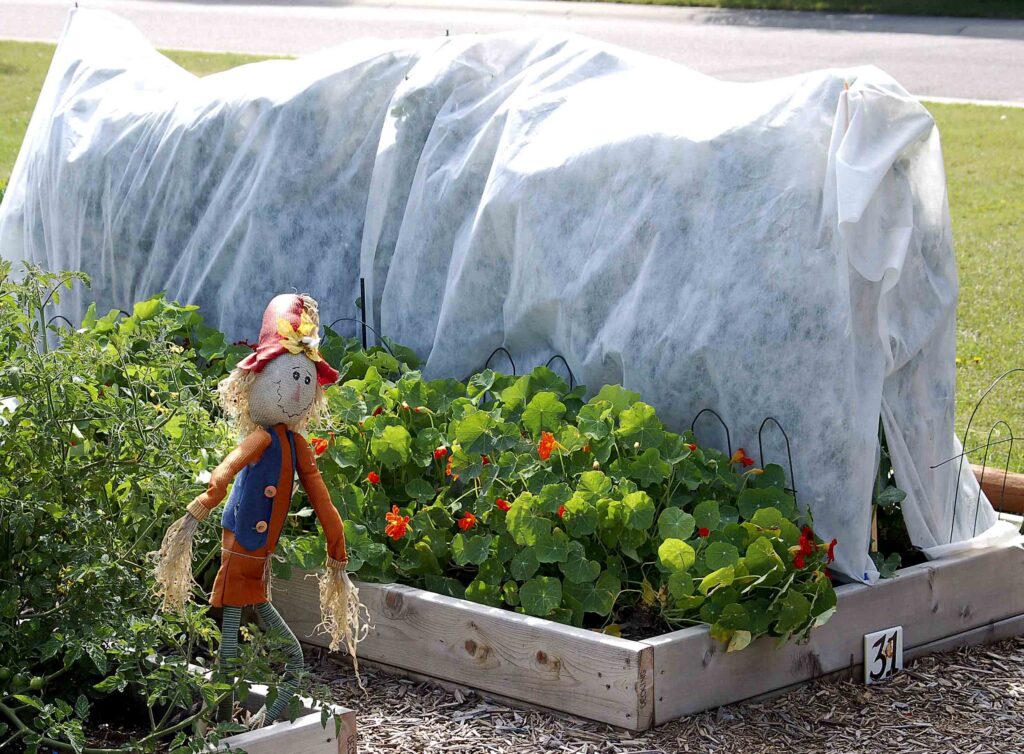
4. Utilize Row Cover
Your garden will be most susceptible to insect damage when seedlings are young and not yet strong. Cabbage worms can take out a young kale or cabbage plant. But if the plant’s had time to get established, you’re more likely to wind up with an edible, if hole-y, crop. A simple insect netting from the garden center (or even tulle from the fabric store!) can give plants enough protection when they’re small and most vulnerable.
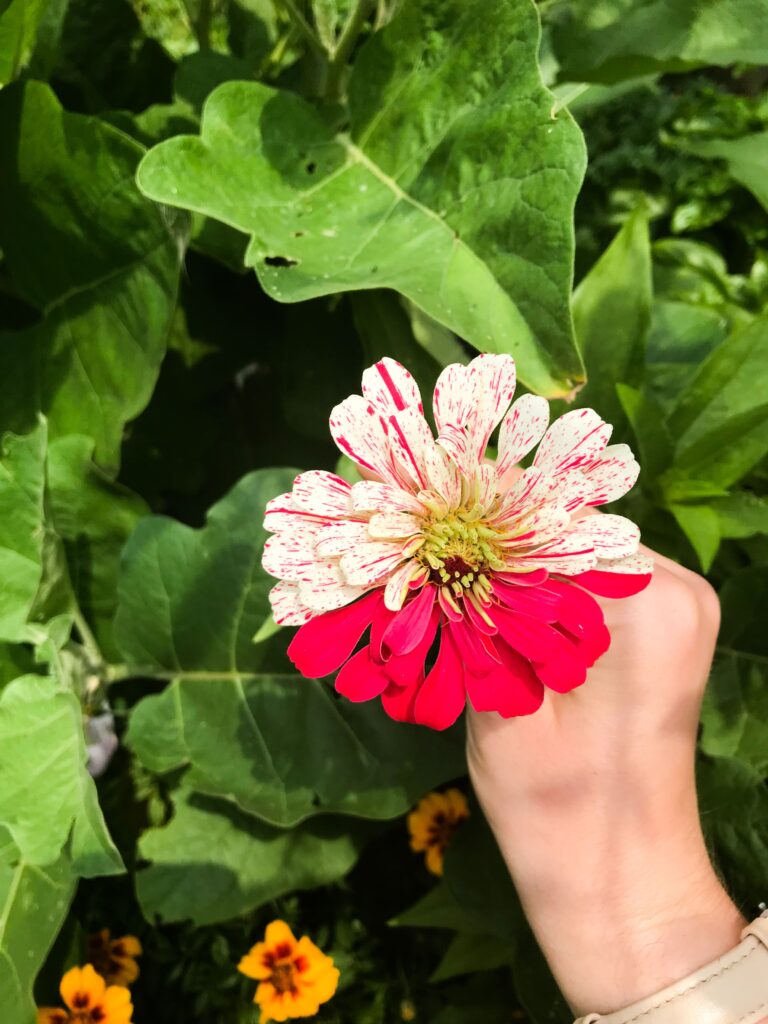
5. Increase Pollinators and other Beneficial Insects
Lucky for us gardeners, many of the bad bugs that eat our crops have natural predators in the form of other common garden visitors. Ladybugs can wipe out an aphid infestation in a snap, and birds love hornworms and slugs. Growing plants and flowers loved by pollinators and other good bugs is a great way to fight garden pests naturally. This goes along with polyculture and companion planting, but sprinkle flowers throughout your garden beds to attract pollinators and control infestations.
Up until now, the above methods are for cultivating a healthy garden that can better withstand pest infestations. Now, let’s talk about how to handle when those infestations occur and seem to be threatening the health of your plants.
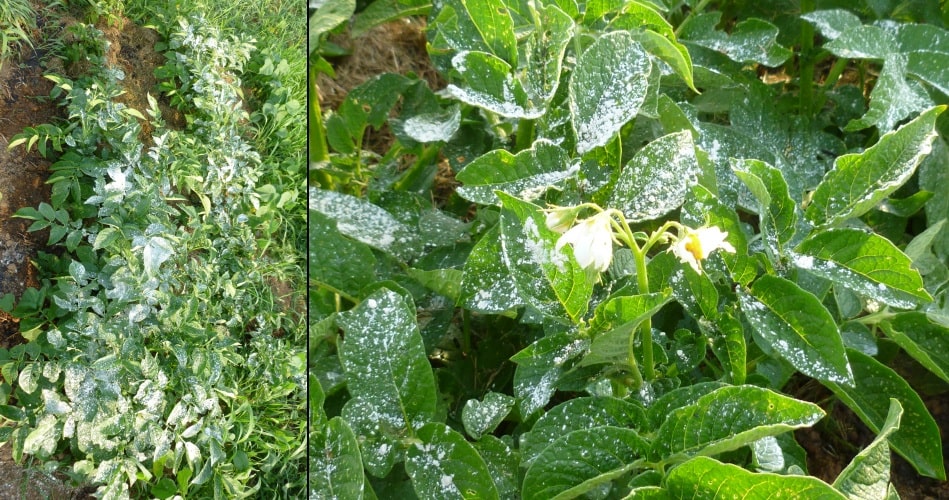
6. Food-Grade Diatomaceous Earth
Commonly referred to as DE, diatomaceous earth is actually ground-up fossils! It’s a white, chalky powder that’s made up of the fossilized remains of diatoms, single-celled algae whose cell walls are made of silica. DE is incredibly drying (to bugs and to you). For it to be effective, make sure you’re buying food-grade DE – available at garden centers and any sort of feed or farm supply store.
It works to fight garden pests naturally by destroying pests’ hard exoskeletons, desiccating them from the inside out. It also works on soft-bodied insects like slugs. I’d suggest trying not to directly touch it too much, as its incredible drying power can abrade your hands. Also wear a mask or try not to breathe it in – the particles will abrade your lungs too!
You can buy special dispensers that enable you to sprinkle it on plants without using your hands, but there are loads of homemade methods too. Jessica Sowards of Roots and Refuge Farm suggests shaking DE through the foot of a pair of pantyhose like it’s a sieve.
How to Use:
Lightly dust on the leaves of plants where pests are present. Try to avoid flowers as DE will dessicate pollinators too. You’ll need to reapply after rain. Best to apply in the evening when the heat of the sun has passed.
Effective on:
Slugs, snails, squash bugs, pill bugs, flea beetles, Japanese beetles, aphids, cutworms, crickets, grasshoppers
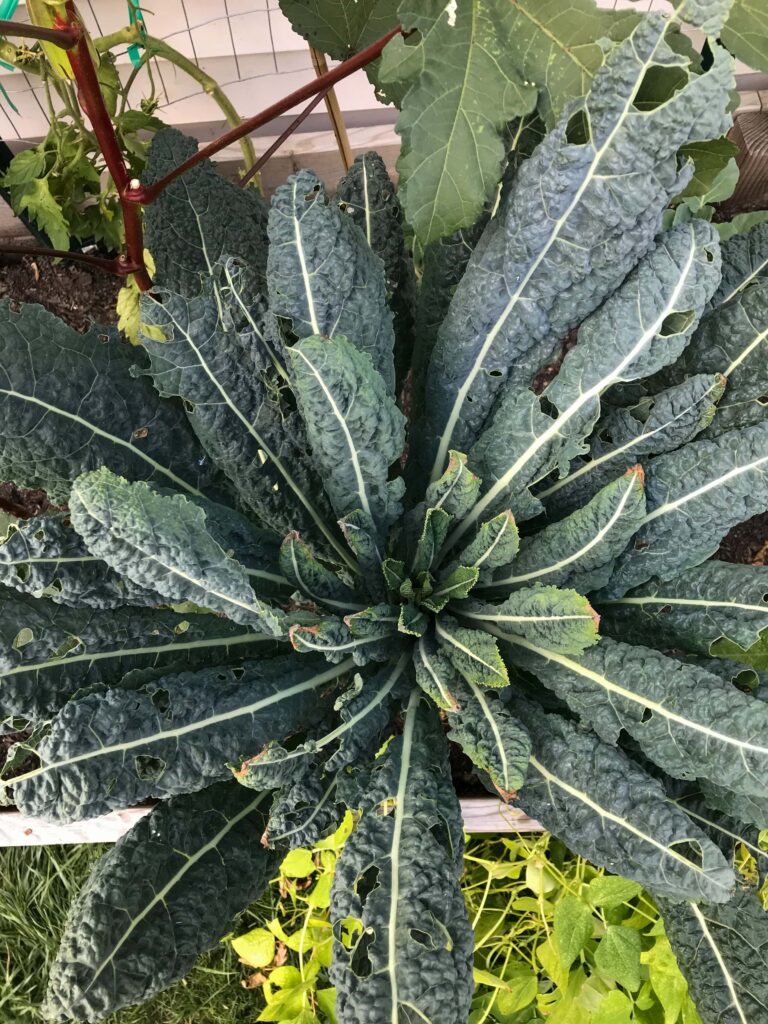
7. Bacillus Thuringiensis
Also known as Bt, bacillus thuringiensis is a natural bacteria found in soil that, when ingested will cause bugs to sicken and die. It’s particularly effective on the soft-bodied insects (i.e. caterpillars) that munch on brassicas and cole crops (Brussel sprouts, broccoli,cabbage, cauliflower, collards, kale, kohlrabi, mustard greens, etc).
Critters must eat the Bt for it to be effective, so be sure you’re spraying all leaf surfaces (eggs are often clustered on the underside). Try also to spray when pests are most likely to be feeding, in the early morning and evening, instead of in the heat of day.
Since Bt is not a broad-spectrum insecticide, it’s a gentler form of pest control that breaks down quickly. It will only affect caterpillars, so bees, birds, and ladybugs are safe!
How to Use:
Follow any dilution instructions on the bottle. Spray the plant, being sure you coat all sides of the leaves. Reapply after rain.
Effective on:
Any sort of caterpillar or insect in the larval stage. Cabbage worms and loopers, borers, hornworms.
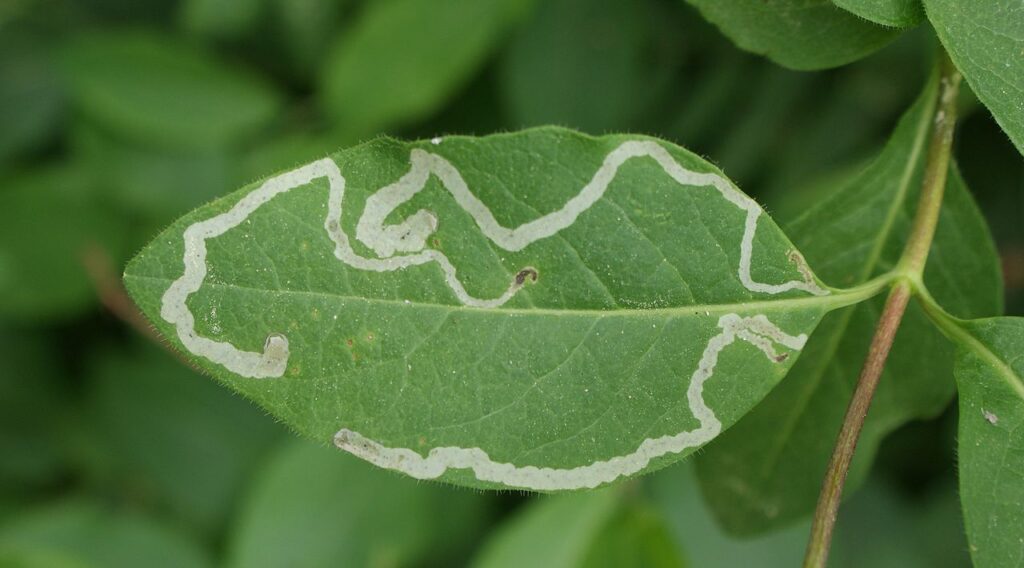
8. Neem Oil
Neem oil comes from the neem tree of South Asia – it’s cold-pressed much the same way olive oil is. Like some common companion plants, neem oil works as a repellent that discourages bugs from feeding on your plants. If they do eat it, neem messes with their hormones so growth and mating are stunted and eating hindered.
For neem oil to be its most effective, you need to reapply regularly. The goal is to interrupt munching bugs in their larval stage so they can’t reproduce – leading to decreased infestations over time. But it’s important to make sure you’re buying 100% cold-pressed neem oil, though. The market is full of diluted versions that won’t be as effective for pest control.
Try to apply in the evening (or, less preferably, in the morning). Applying in the heat of the sun will more likely lead to burning your plants.
How to Use:
Follow any dilution instructions on the bottle. Adding dish soap or liquid castile soap at the ratio of 1 tbsp per gallon can help keep the oil emulsified in the spray. Spray the plant, being sure you coat all sides of the leaves. Reapply every few days until insect populations decrease and after rain.
Effective on:
Aphids, whiteflies, mealy bugs – anything that chews on or sucks foliage.
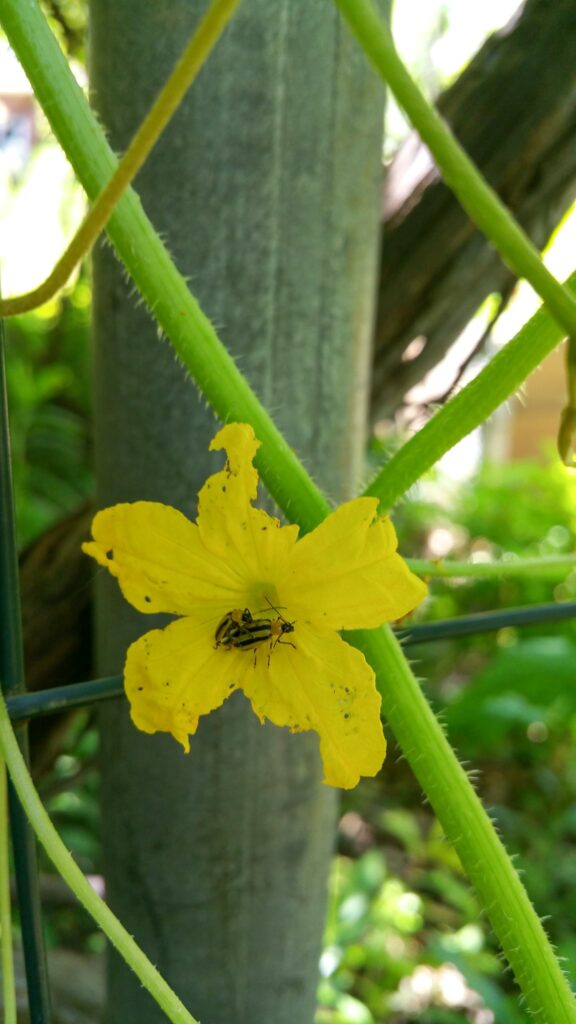
9. Pyrethrin
Fun fact: pyrethrin is derived from chrysanthemums! It’s a natural compound used to fight garden pests naturally by messing with their nerve cells – leading to almost instant death. It’s considered one of the safest insecticides because it breaks down so quickly in the environment.
On the other hand, it’s nondiscriminatory. It will kill good bugs as well as bad, so your best bet is to spray it directly on active infestations. Don’t use it too often and definitely don’t broadcast it over your entire garden.
**Make sure you read the bottle you buy carefully. While pyrethrin is approved for organic gardening, many sprays you find in garden centers include the addition of permethrin, a synthetic version of pyrethrin. While pyrethrin is approved for organic gardening, permethrin is not. It’s highly toxic and persists in the environment for up to 90 days!
How to Use:
Follow any dilution instructions on the bottle and spray directly on active insect infestations.
Effective on:
Cabbage loopers, cucumber beetles, leaf-hoppers, squash bugs, stink bugs.
10. Insecticidal Soap
For ages upon ages, gardeners have been using soap sprays to fight garden pests naturally. Like DE, soap is a desiccant – drying out bugs much like dish soap does your hands, so they dehydrate and die. You can totally use regular dish soap or castile soap, but nowadays you can find specific insecticidal soaps at garden centers that are more concentrated.
How to Use:
Follow any dilution instructions on the insecticidal soap bottle. If using castile or dish soap, dilute at a rate of 1 tbsp per gallon. You can also add some oil to suffocate insects. Note that insecticidal soap won’t remain on leaves – it must be directly sprayed onto bugs to be effective.
Effective on:
Aphids, mites, mealybugs, Japanese beetles, thrips
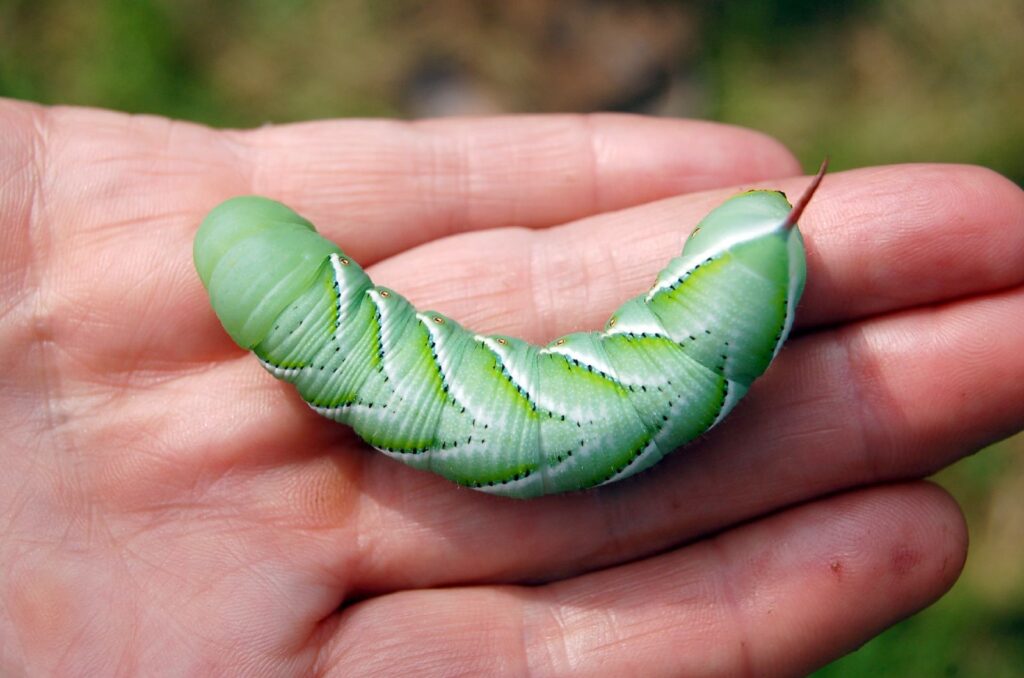
11. Your Hands
No matter how many of the above you try, you’re gonna find yourself hand-picking the creepy crawlies that evade other methods. Yes, it’s gross, but you do get used to it. Just grab them whenever you see them. This spring, I delayed plucking a few cucumber beetles I saw because they were nowhere near my cucumber bed, and within days my whole crop had succumbed to bacterial wilt.
One struggle with handpicking you may find is that some bugs are master camouflagers. Two that come to mind are cabbage worms and tomato hornworms. For the latter, grab yourself a cheap blacklight and go worm picking once it’s gotten dark. Also – lately on Instagram, people have been recommending feeding hornworms to pet lizards as they’re sold at ridiculously high prices at pet stores. Please don’t do this! The kind in the pet store is not the same as the kind in your garden – the latter are highly toxic!
If you don’t relish the idea of squishing a caterpillar or beetle with your fingers or shoes, carry a cup of soapy water around the garden. Or, if you have chickens, drop bugs into a cup and feed them to your birds as a nice treat.
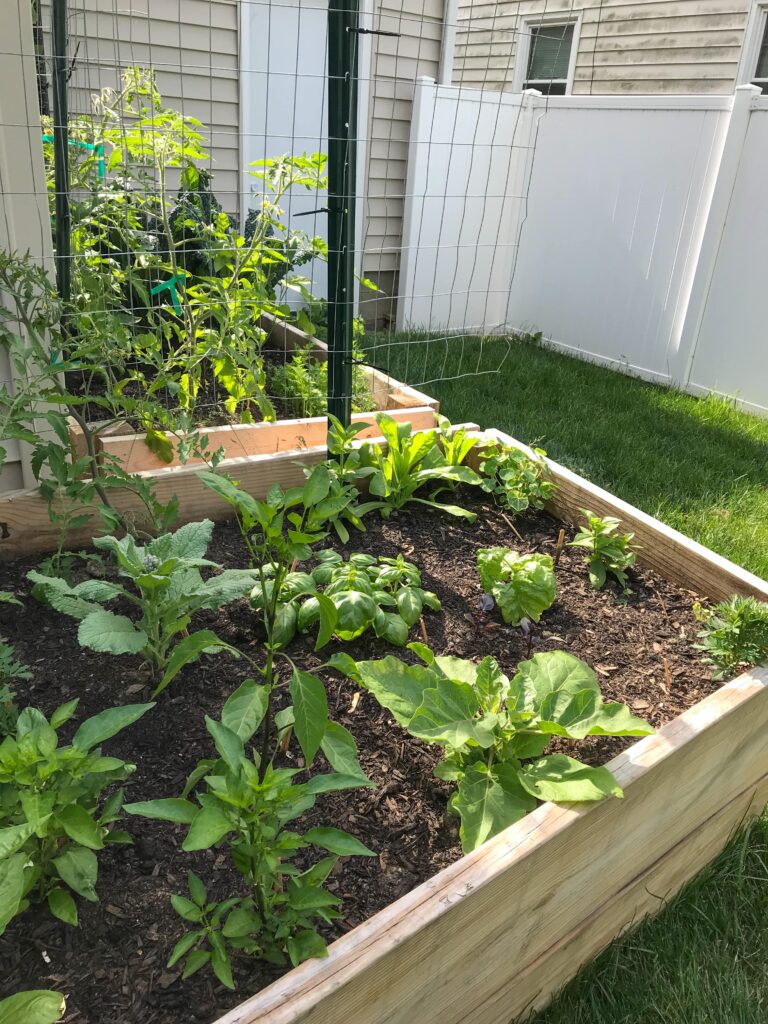
12. Succession Sowing
When all else fails, pull the plant and re-sow. Honestly, you should go into the season expecting to lose plants. It will make it hurt less.
Depending on where you live and your local pest load, you can also just delay sowing until later in the summer when the pest pressure is lighter. The proprietor of my local urban farm store recommends delaying planting zucchini and summer squash here until July as by then the squash bugs have calmed down.
Even if you don’t want to delay planting, many quick-maturing crops can easily be planted in 2 or 3 successions across the growing season.
If you don’t have the money to invest in an organic insecticide arsenal right now, all is not lost. There are loads of recipes online for homemade sprays using essential oils or alliums and chile peppers.
In my experience, these aren’t super effective, but partial effectiveness is still better than doing nothing and losing your whole crop!
And at the end of the day, if you want an organic garden, you have to reconcile yourself to living with the bugs. In my opinion, if I eat some hole-y kale every once in a while, it’s worth the trade-off for a garden full of bees and butterflies – and knowing I’m a part of the cycle of Mother Nature.

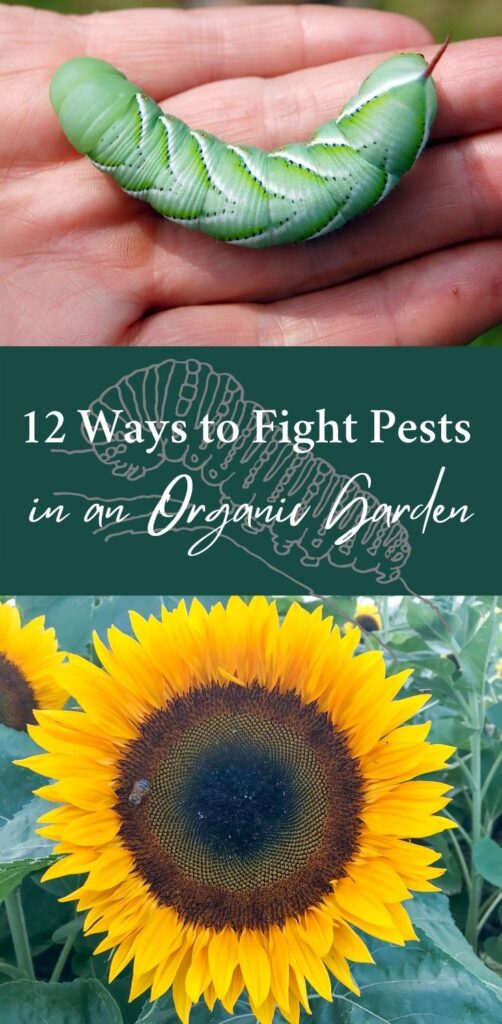


I only knew about doing a few of these pest fighting tips. But wow, I didn’t know that there were so many other way. Super informative and interesting.
Oh yeah, I’m sure there are more too! This is just my standard “toolbox” if you will.
Great post! This is great for my organic garden. Thank you for sharing!
No problem!
This is so helpful and timely! Thanks so much!
You’re welcome! I hope it’s useful!
Thank you so much for the tips. Pinning so I can implement these when I’m getting ready for next years garden.
I’m so glad it was helpful!
This looks like e great and comprehensive list that I will keep on hand for future reference. Thank you so much!
This is great. Thank you!